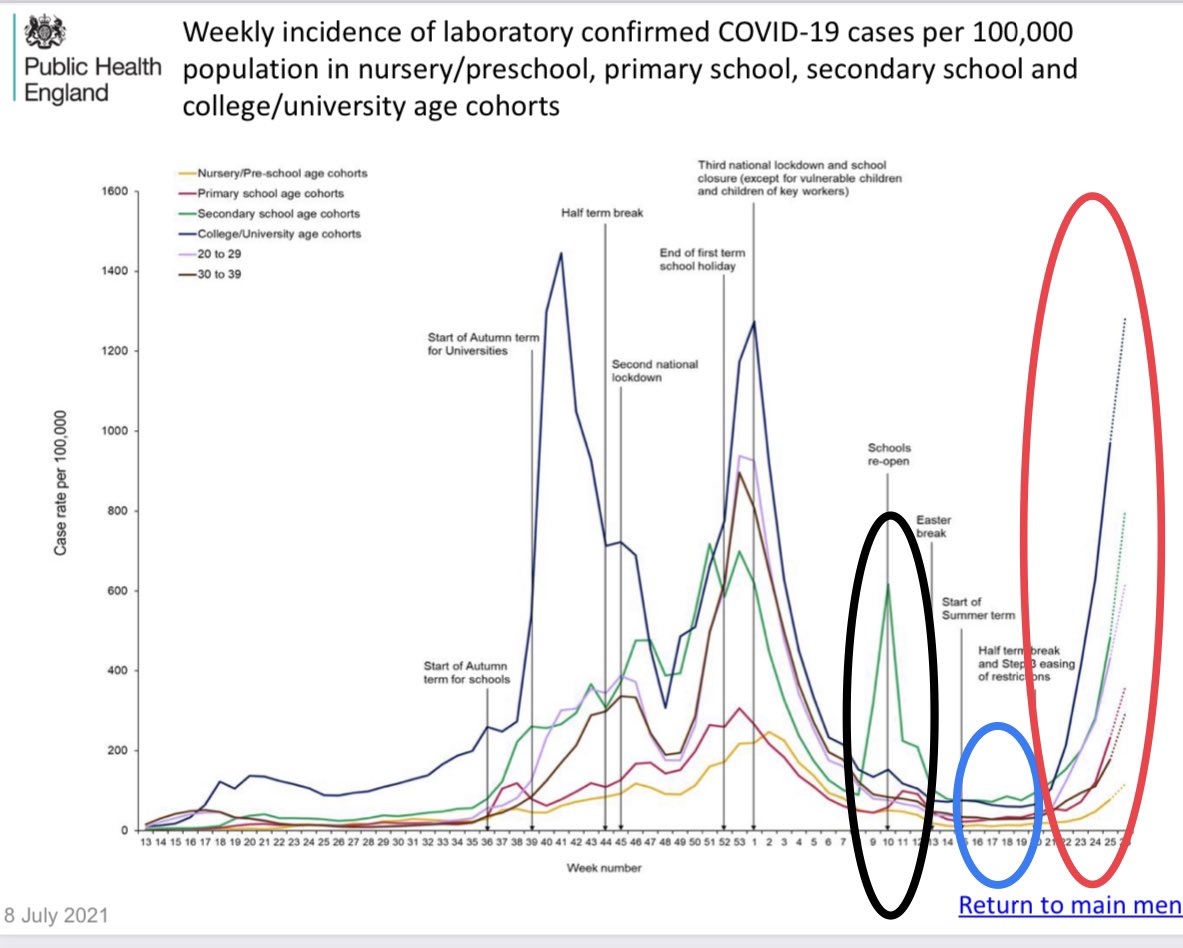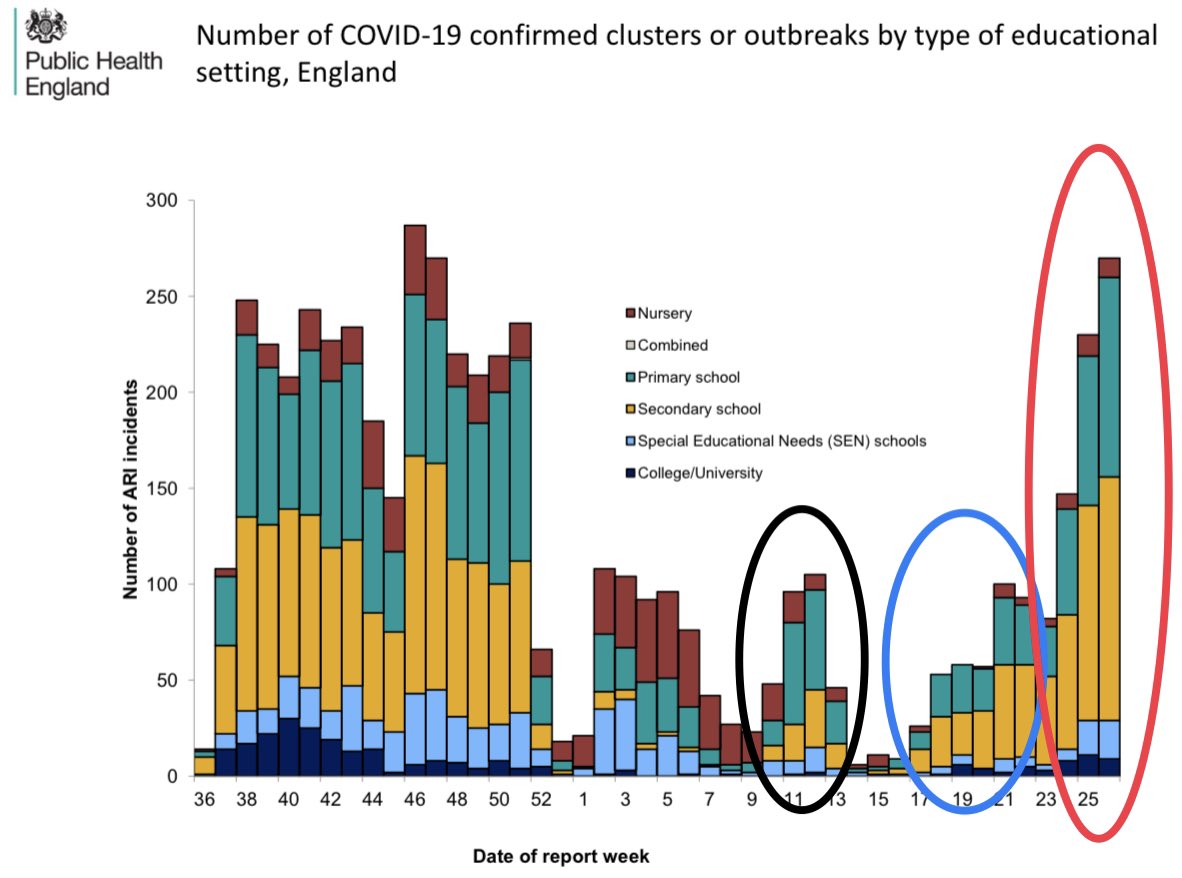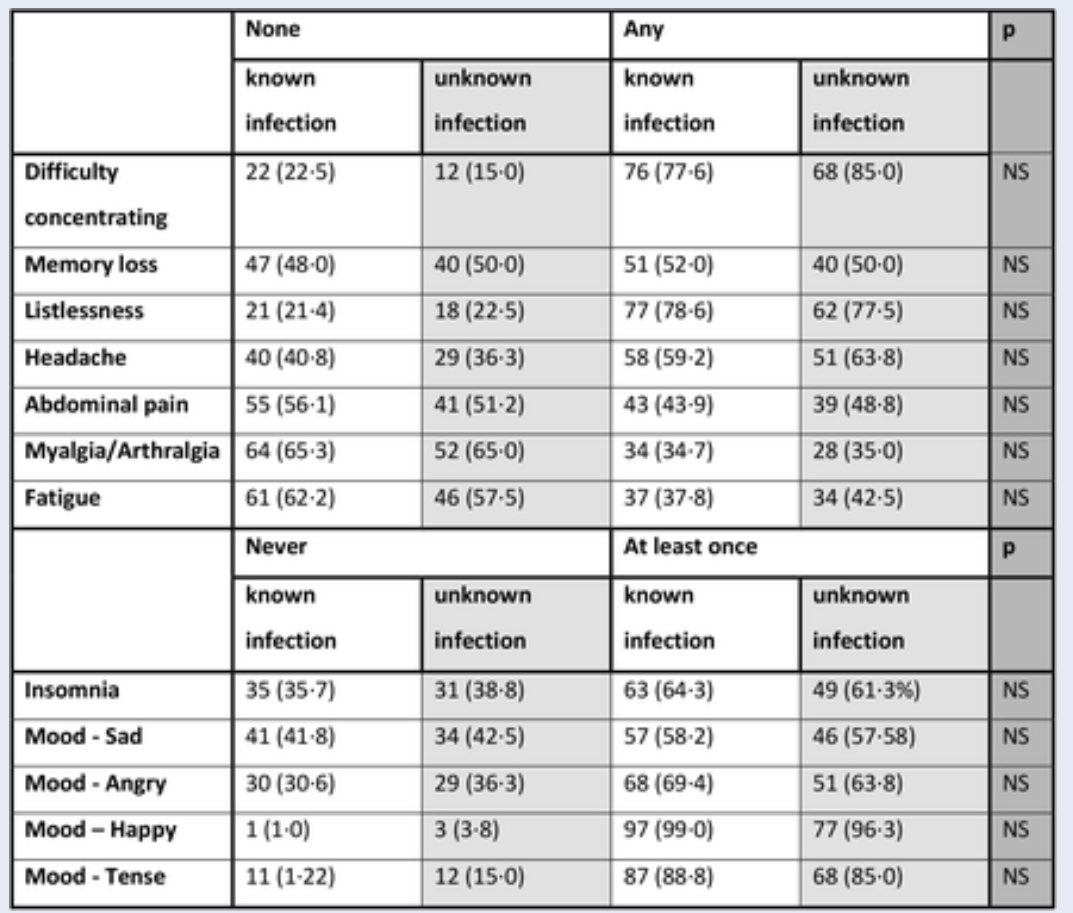
1/ On 19 July 2021, JCVI published their statement on #Covid19 vaccination for 12-17 yr-olds
If you only heard that JVCI did not recommend vaccine for teens then you missed out on a wealth of information & recommendations in the report
Here’s why 🧵
👉 gov.uk/government/pub…
If you only heard that JVCI did not recommend vaccine for teens then you missed out on a wealth of information & recommendations in the report
Here’s why 🧵
👉 gov.uk/government/pub…
2/ First, the MHRA & JCVI have very different functions. The MHRA authorises medicines, including vaccines, & monitors their safety but does not make vaccine recommendations. The JCVI makes recommendations on vaccines for the national immunisation programme & for risk groups
3/ JCVI took rather long to release their statement on vaccinating 12-17 yr-olds because risk-benefits of vaccinating this age-gp
were finely balanced between risk of severe #Covid19 & risk of rare but severe side-effects for the only vaccine licensed for 12-15 yr-olds (Pfizer)
were finely balanced between risk of severe #Covid19 & risk of rare but severe side-effects for the only vaccine licensed for 12-15 yr-olds (Pfizer)
4/ The JCVI reviewed all the available evidence on #COVID19 vaccines in teenagers & young adults including data that are not yet in the public domain. They also heard representations from professional bodies & members of the public on vaccination of children against #COVID19
5/ The JCVI also considered #Covid19 deaths, hospitalization, PIMS-TS, long covid, indirect health implications, wider heath implications, operational issues & educational impact of vaccination. Cost-effectiveness & vaccine supply were *not* part of the scientific decision-making
6/ The main concern raised by JCVI was emerging reports from UK & other countries of rare but serious adverse events, including myocarditis (inflammation of heart muscle) & pericarditis (inflammation of membrane around the heart) after Pfizer & Moderna vaccines in younger adults
7/ JCVI stated that data on the incidence of adverse events are limited 👉 this is because new cases continue to be reported & risk estimates continue to evolve: Israel estimates myocarditis rates to be between 1 in 3,000 & 1 in 6,000 vaccinated men 👉 sciencemag.org/news/2021/06/i…
8/ JCVI then clarified that “longer-term health effects from the myocarditis events reported are not yet well understood” 👉 even though the young men recovered & went home, we need more data to reassure us that there are no lasting effects to the ❤️, which take time to collate
9/ Myocarditis is no joke. It involves immune cells & cytokines in heart muscle & the inflammation can take days to weeks to settle. Importantly, the consequences of this inflammation are not known. Hopefully it’s nothing but any damage or scarring to tissues would be lifelong
10/ Given these unknown risks (ie. after myocarditis), the JCVI stated that: “Until more safety data have accrued and their significance for children and young people has been more thoroughly evaluated, a precautionary approach is preferred”
11/ The JCVIs position is not against vaccinating teens but: “JCVI favours deferral of a universal offer of vaccination until more data have accrued” 👉 JCVI will continue to monitor the situation & if more data emerge to favour vaccination, then the decision will be reassessed
12/ The JCVI did recommend that 12+ years-olds with specific underlying health conditions that put them at risk of serious #Covid19 should be offered COVID-19 vaccination. These include (*but are not restricted to*) severe neurodisabilities, Down syndrome & immunocompromised
13/ Severe neurodisabilities: the JCVI actually recommended vaccinating 12+ year-olds with severe neurodisabilities back in Jan 2020 when the vaccines weren’t even licensed for 12-15 year olds because benefits outweighed potential risks after vaccination 👉adc.bmj.com/content/early/…
14/ Immunosuppressed teens are also recommended the vaccine because they have a higher risk of severe #COVID19, whilst acknowledging that vaccine responses may be lower in this group - this is true not just for COVID vaccines but all vaccines in for the immunocompromised
15/ JCVI also advised that 12+ year-olds who are household contacts of adults/kids who are immunosuppressed should be offered COVID-19 vaccination - this is to help indirectly protect the immunosuppressed household member
16/ Teens with Down syndrome (Trisomy 21) get a specific mention because this condition has one of the highest risk of severe #COVID19 among all underlying conditions 👉 bmj.com/content/371/bm…
17/ For 16-17 years-olds who have a higher risk of #Covid19, including those with specified underlying medical condition as currently set out in the Green Book, they will continue to be offered COVID-19 vaccination as per the Green Book 👉 gov.uk/government/pub…
18/ The JCVI also stated that it is currently reviewing the list of underlying medical conditions among 12-15 year-olds who will also be recommended #Covid19 vaccine. The full list of conditions will be published in the Green Book in the next few weeks 👉 gov.uk/government/pub…
19/ In conclusion:
- JCVI is waiting for more safety data on outcomes of myocarditis before recommending vaccine for all teens
- JCVI listed the major risk groups among 12-15 yr-olds for vaccination & confirmed that the full list of medical conditions will be published soon
End
- JCVI is waiting for more safety data on outcomes of myocarditis before recommending vaccine for all teens
- JCVI listed the major risk groups among 12-15 yr-olds for vaccination & confirmed that the full list of medical conditions will be published soon
End
• • •
Missing some Tweet in this thread? You can try to
force a refresh












